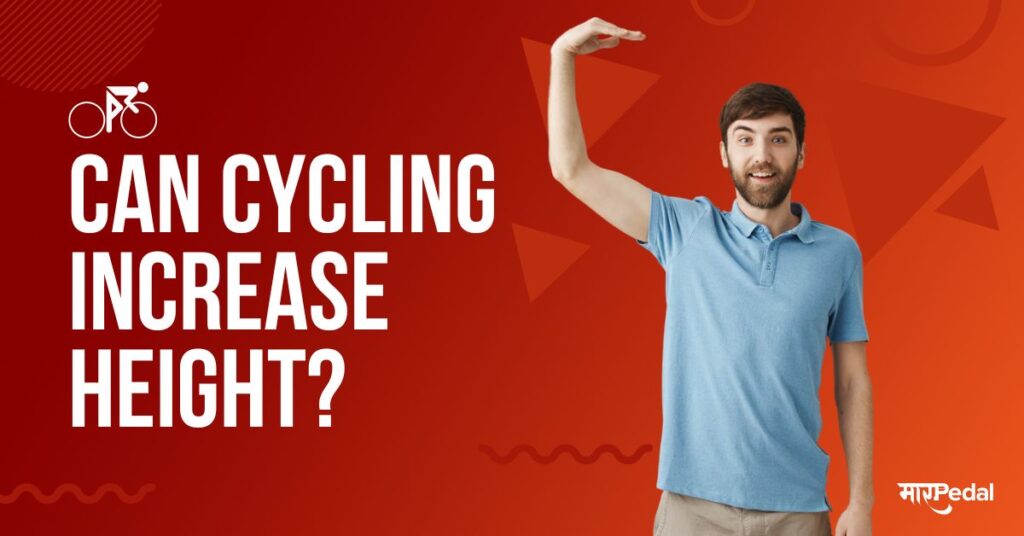
Biking 30 miles in a single ride is a significant achievement for many cyclists. While experienced riders may breeze through a 30-mile ride, it can seem daunting for beginners. So how long does it actually take to bike 30 miles?
The time required depends on several factors, including your fitness level, the bike you’re riding, the terrain, weather conditions, and your goals. With some preparation and training, a 30-mile ride is an attainable goal for most relatively fit individuals.
Here’s what you need to know about how long it takes to bike 30 miles and tips for completing the distance efficiently.
Factors That Impact Biking Speed and Time
Fitness Level and Experience
Your general fitness level and cycling experience have a major influence on how fast you can bike 30 miles. A seasoned cyclist who rides regularly will complete 30 miles much faster than someone just starting out.
Beginners averaging 10-12 mph would need 2.5 to 3 hours to bike 30 miles. Intermediate cyclists cruising at 14-16 mph could complete the distance in 1.5 to 2 hours. Experienced riders capable of maintains 18+ mph speeds could potentially finish 30 miles in around 1.25 hours if the terrain is flat.
Improving your cardiovascular fitness, endurance, and cycling-specific muscle strength will all help you bike 30 miles faster.
Bike Type
The type of bike you use also affects speed and time. Standard road bikes with skinny, smooth tires and multiple gears are the fastest for pavement cycling. Fitness or commuter bikes with wider tires and limited gears are slower.
See also: Types of Cycles – Exploring the Different Forms of Bicycles
Mountain bikes designed for off-road riding require the most exertion to pedal on pavement. A road bike can shave significant time off a 30-mile ride compared to a mountain bike.
Terrain and Route
Hilly terrain will slow you down and require more energy to climb, adding time. Flat or gently rolling routes are ideal for faster times. Stoplights, traffic, and course intricacy also impact overall speed.
Choose the most direct, flattest route possible if your goal is to complete 30 miles quickly. Know the elevation profile of your chosen route to estimate effort level.
Weather and Wind
Headwinds, heat, humidity, and extreme cold all increase difficulty and decrease speed. Optimal conditions for fast times are cool temperatures, low humidity, low wind, and cloud cover.
See also: What to Wear Cycling – Choosing the Right Gear for Every Weather Condition
Tailwinds boost speed while headwinds hamper progress and add time. Check the wind forecast and direction before your ride. Plan routes with tailwinds for the return leg.
Goals and Motivation
Your mindset and motivation affect performance. Are you trying to set a new PR or just enjoy a casual ride? Having a time goal, training plan, and focus on speed work will drive faster times.
See also: Who Has the Maximum Number of Olympic Gold Medals in Cycling?
Staying motivated when it gets tough comes down to your mental game. Use positive self-talk, focus on form, celebrate milestones during the ride, and keep the end goal in mind.
Tips for Biking 30 Miles Faster
Train With High Intensity
Pushing your limits with interval training, hill workouts, and tempo rides helps boost endurance and speed. Work on sustaining faster paces.
Improve Bike Handling
Smooth pedaling and bike handling skills let you ride more efficiently. Practice cornering, shifting gears, and maintaining rhythm.
Watch Your Nutrition
Eat properly before, during and after long rides. Carbs and hydration are vital for energy and stamina. Bring snacks to fuel up.
See also: Can we do Cycling after Dinner? Pros and Cons Explained
Use Aerodynamic Equipment
Wear tight-fitting cycling kits, use clip-in pedals, and ensure your bike is adjusted for an aero position. Minimize drag.
Ride With Others
Group rides provide pacing, motivation and drafting benefits. Take turns pulling at faster speeds.
Monitor Data
Use a bike computer to track distance, speed, time, cadence, heart rate and power. Analyze your data to improve.
What is a Good Time to Bike 30 Miles For Me?
There are no universal benchmarks for what constitutes a good 30-mile time since it depends on your individual fitness level. A reasonably fit cyclist in their 20s or 30s should strive for under 2 hours initially. Here are some general time goal examples based on age and experience:
- Beginner, casual rider: 2.5 to 3 hours
- Intermediate cyclist: 1.5 to 2.25 hours
- Experienced cyclist: 1 to 1.5 hours
- Competitive cyclist: Under 1 hour
Improve your time with training. Cutting just 1 mph from your average speed saves 26 minutes on a 30-mile ride. Don’t get discouraged if your times are slow at first. Consistent practice will quickly boost speed and endurance.
Training Plan to Bike 30 Miles
A 12-16 week training plan helps build the fitness to comfortably bike 30 miles. Here is an example plan spanning 12 weeks:
Week 1: 1-2 rides up to 10 miles. 2 days cross-training.
Week 2: 1 ride 10-15 miles. 1 ride up to 10 miles. 2 days cross-training.
Week 3: 1 longer ride 15-20 miles. 1 ride 10-15 miles.
Week 4: 20 mile ride. 15 mile ride. Increase weekly mileage by no more than 10%.
Weeks 5-8: Gradually increase longest ride by 2-5 miles per week. Hold some 20-30 mile rides.
Weeks 9-11: Include some back to back ride days. Ride 32+ miles at least once.
Week 12: Taper with short, easy rides. Goal 30 mile ride.
Include hill work, intervals, and tempo efforts during shorter rides. Build mileage gradually while avoiding overtraining. Yoga, swimming, or running provide great cross-training.
What to Bring on a 30 Mile Bike Ride
To make your ride as enjoyable and efficient as possible, pack the following:
- Bike tools/spare tube: Be prepared for flats and breakdowns.
- Helmet: Protect your head in case of falls.
- Cycling clothes: Padded shorts, wicking jersey, jacket.
- Sunscreen/glasses: Protect against sun and glare.
- Hydration: Water bottles and/or hydration pack with electrolytes.
- Food: Energy bars, gels, bananas, sandwiches. Replenish calories.
- Cash/ID card: For stops at shops or cafes along the way.
- Bike pump: Allows refilling tires.
- Phone/headphones: For music, motivation, and emergency contacts.
- Bike computer: Track distance, speed, cadence.
Maintaining Energy and Motivation
Riding 30 miles takes mental endurance as well as physical stamina. Here are tips to stay energized and motivated on long rides:
- Consume calories/electrolytes: Replenish spent energy stores with food/drink.
- Break up the ride: Switch up your pace, terrain; take short breaks.
- Set milestone goals: Celebrate each 10 miles completed.
- Listen to music/podcasts: Take your mind off the grind.
- Ride with others: Social motivation helps fight mental fatigue.
- Remember your goals: Visualize crossing the finish line.
- Focus on form: Proper technique provides an edge when tired.
- Stop for snacks/coffee: Look forward to planned pit stops.
Common Concerns When Biking 30 Miles
If you are new to cycling 30+ miles, some common concerns may include:
Saddle soreness: Break-in your saddle and wear padded shorts. Adjust saddle height properly. Apply chamois cream. Stand up periodically.
Mechanical issues: Perform bike tune-ups and bring spare tubes, tools and a pump. Learn basic bike repair.
See also: How to Tighten Brakes on a Bicycle 🔧
Fatigue/burnout: Build mileage gradually and fuel properly during rides. Vary training with rest days.
Dehydration: Sip electrolyte drink regularly throughout the ride. Hydrate well the day before.
Getting lost: Study route maps. Bring GPS device/phone. Use route tracking app.
Safety: Obey traffic laws. Use lights and bright clothing. Carry ID and emergency cash.
See also: What States Can You Get a DUI on a Bicycle?
Wrapping Up
Biking 30 miles in one session is an ambitious goal for new cyclists but an extremely rewarding accomplishment. While it can seem daunting, training your body and mind makes 30 miles attainable. Stick to a training plan, fuel properly, utilize the right gear, and maintain motivation. With perseverance, you’ll be crossing that 30-mile mark sooner than you think.
See also: how long does it take to bike 6 miles?
Frequently Asked Questions
How long should it take a beginner to bike 30 miles?
For a beginner cyclist, a reasonable time goal for biking 30 miles is 2.5 to 3 hours. Beginners ride at speeds around 10-12 mph. With training over time, expect to progressively lower your 30 mile time.
Is biking 30 miles a day too much?
Biking 30 miles in a day is not too much for someone who cycles regularly and has built up endurance. But for a new cyclist, aiming for 30 daily miles too soon can lead to overtraining, fatigue and burnout. Build up to 30 mile rides gradually.
How many days a week should you bike 30 miles?
For experienced cyclists, biking 30 hilly miles 1-2 times per week is sustainable. But newer riders should limit long 30+ mile rides to once or twice a month. Focus on building a base with 10-15 mile rides 3 times weekly first.
Is biking 30 miles hard?
Biking 30 miles is quite challenging for newer riders or those who aren’t very fit. The duration of being seated and constantly pedaling works the leg muscles hard. Body positioning on a bike is also taxing. With training, cycling 30 miles gets easier.
What’s the best way to prepare for a 30 mile bike ride?
To prepare for biking 30 miles, train for several weeks prior with regular rides that increase in distance. Ride 3 times a week and incrementally work up to a 20+ mile long ride. Focus on endurance pace and include hill work. Stay fueled and hydrated.
Conclusion
Biking 30 miles in one ride is a rewarding goal that develops your fitness, mental grit and cycling skills. Expect it to take 2-3 hours initially. But with training, you can trim your time down significantly. Patience, perseverance and smart preparation will get you to the 30 mile mark and beyond. Consistent riding of this distance will boost your cardiovascular endurance and leg strength. Plus, you’ll enjoy the scenery and satisfaction of pushing your limits.






